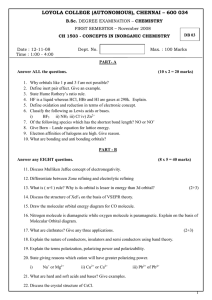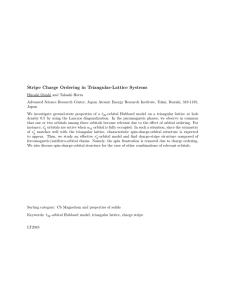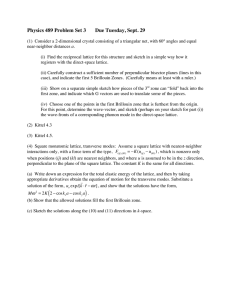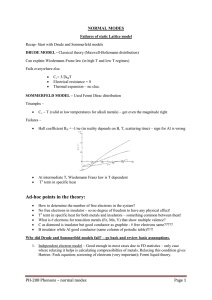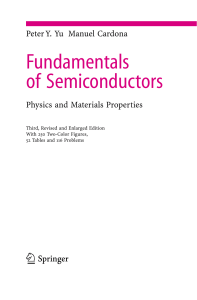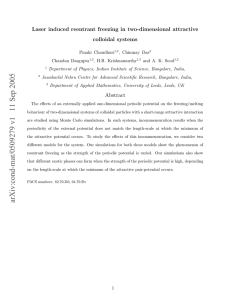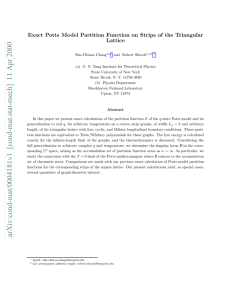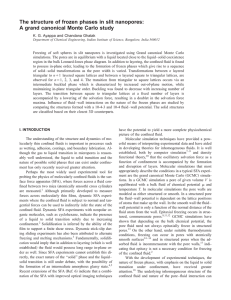Document 13614721
advertisement
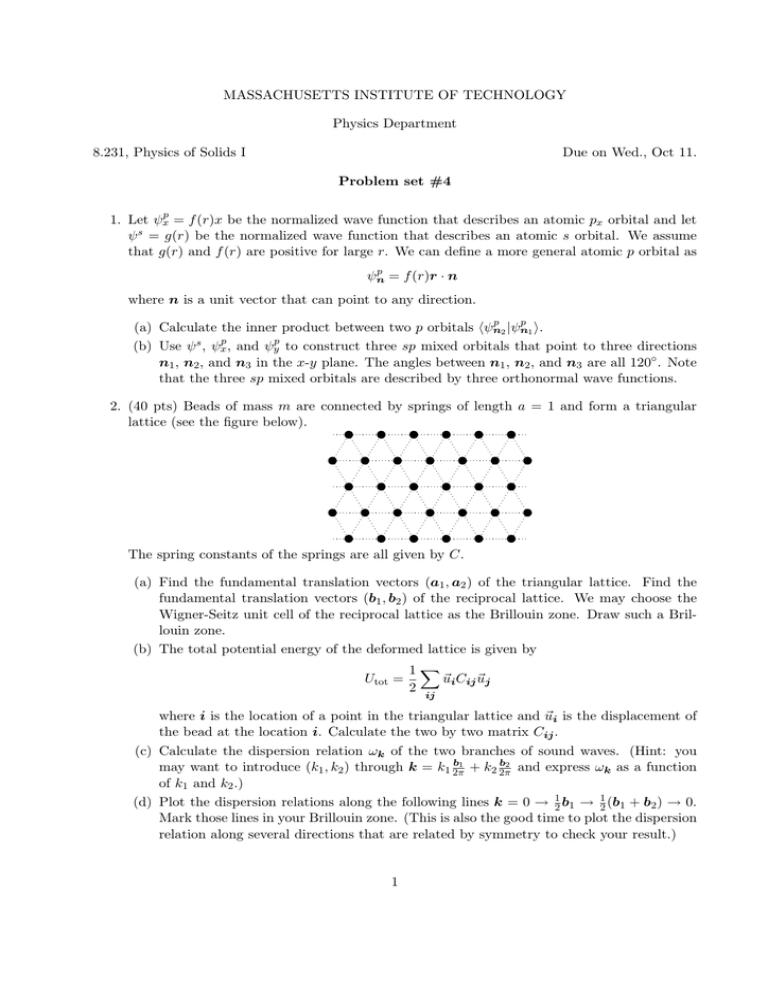
MASSACHUSETTS INSTITUTE OF TECHNOLOGY Physics Department 8.231, Physics of Solids I Due on Wed., Oct 11. Problem set #4 1. Let ψxp = f (r)x be the normalized wave function that describes an atomic px orbital and let ψ s = g(r) be the normalized wave function that describes an atomic s orbital. We assume that g(r) and f (r) are positive for large r. We can define a more general atomic p orbital as p ψn = f (r)r · n where n is a unit vector that can point to any direction. p p (a) Calculate the inner product between two p orbitals �ψn 2 |ψn1 �. (b) Use ψ s , ψxp , and ψyp to construct three sp mixed orbitals that point to three directions n1 , n2 , and n3 in the x-y plane. The angles between n1 , n2 , and n3 are all 120◦ . Note that the three sp mixed orbitals are described by three orthonormal wave functions. 2. (40 pts) Beads of mass m are connected by springs of length a = 1 and form a triangular lattice (see the figure below). The spring constants of the springs are all given by C. (a) Find the fundamental translation vectors (a1 , a2 ) of the triangular lattice. Find the fundamental translation vectors (b1 , b2 ) of the reciprocal lattice. We may choose the Wigner-Seitz unit cell of the reciprocal lattice as the Brillouin zone. Draw such a Bril­ louin zone. (b) The total potential energy of the deformed lattice is given by 1� Utot = �ui Cij �uj 2 ij where i is the location of a point in the triangular lattice and �ui is the displacement of the bead at the location i. Calculate the two by two matrix Cij . (c) Calculate the dispersion relation ωk of the two branches of sound waves. (Hint: you may want to introduce (k1 , k2 ) through k = k1 2bπ1 + k2 2bπ2 and express ωk as a function of k1 and k2 .) (d) Plot the dispersion relations along the following lines k = 0 → 12 b1 → 12 (b1 + b2 ) → 0. Mark those lines in your Brillouin zone. (This is also the good time to plot the dispersion relation along several directions that are related by symmetry to check your result.) 1
